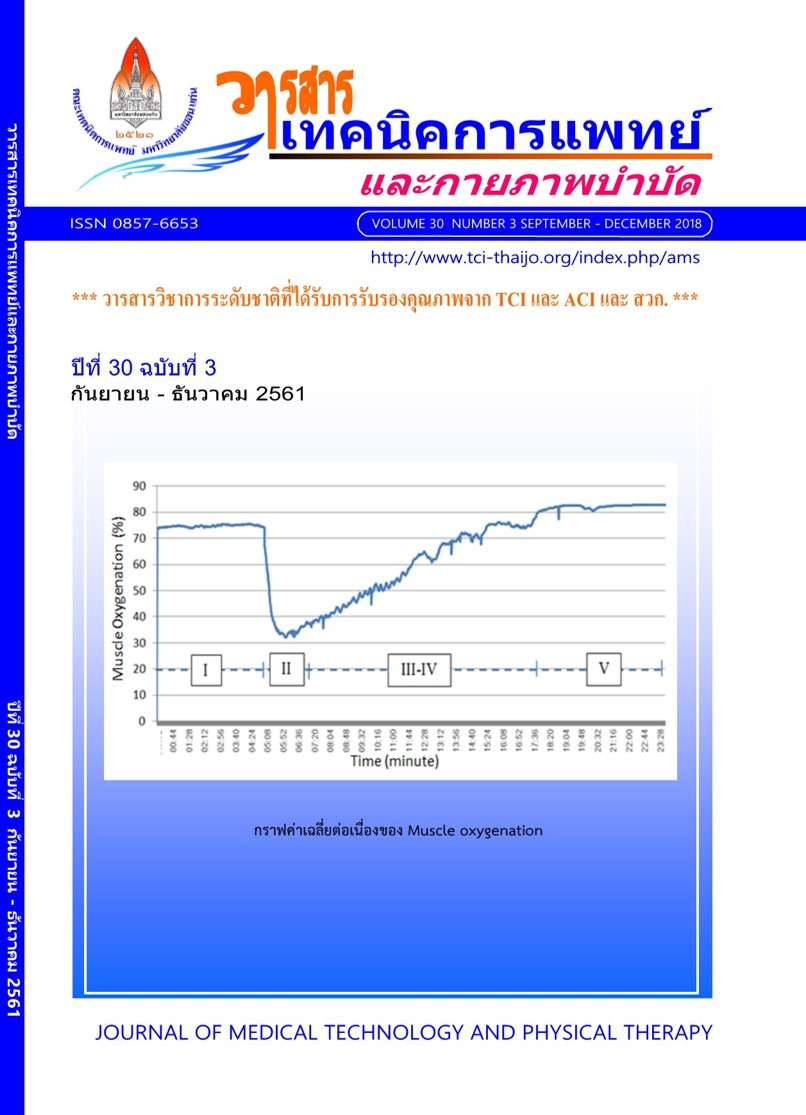Comparison of the erythrocyte sedimentation rate measured by the micro-ESR method and the gold standard Westergren method
Main Article Content
Abstract
Erythrocyte sedimentation rate (ESR) is a commonly performed laboratory test for screening and monitoring of inflammation, infection, cancer or autoimmune disease. There are several methods for measuring the ESR, but the gold standard method is the Westergren method, which is time-consuming and requires a large amount of blood sample. This study aims to improve the micro-ESR method using hematocrit tube and compare with the Westergren method. EDTA blood samples were processed for ESR measurement by micro-ESR method and Westergren method according to the International Council for Standardization in Haematology (ICSH) recommendation. The first set of 65 blood samples was used to generate an equation for calculating the micro-ESR to the Westergren ESR. The obtained equation is micro-ESR (mm/hr) = 0.0026x3 – 0.1472x2 + 4.1674x, where x is the distance in millimeters of erythrocyte sedimentation for 45 minutes. The second set of 101 blood samples was used to compare the ESR measured by micro-ESR method with Westergren method. Spearman’s correlation and Bland-Altman plot were performed to analyze the data. Micro-ESR results showed high correlation coefficient of 0.92 and the Bland-Altman plot revealed an acceptable agreement (mean bias = 0.6) with the Westergren method. The micro-ESR method is a reliable method for ESR determination. The test is faster, cheaper and requires small blood volume as compare to the Westergren method. It is an appropriate method for determining ESR especially for the patients with limitation of blood collection as pediatric patients, very old patients and critically ill patients.


